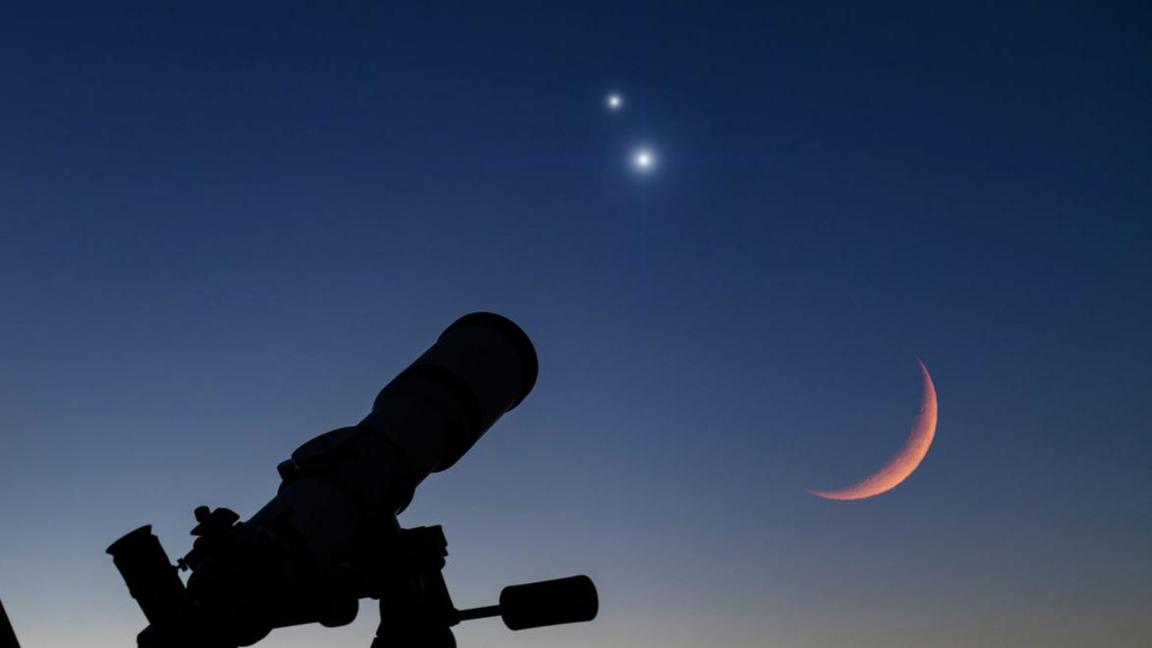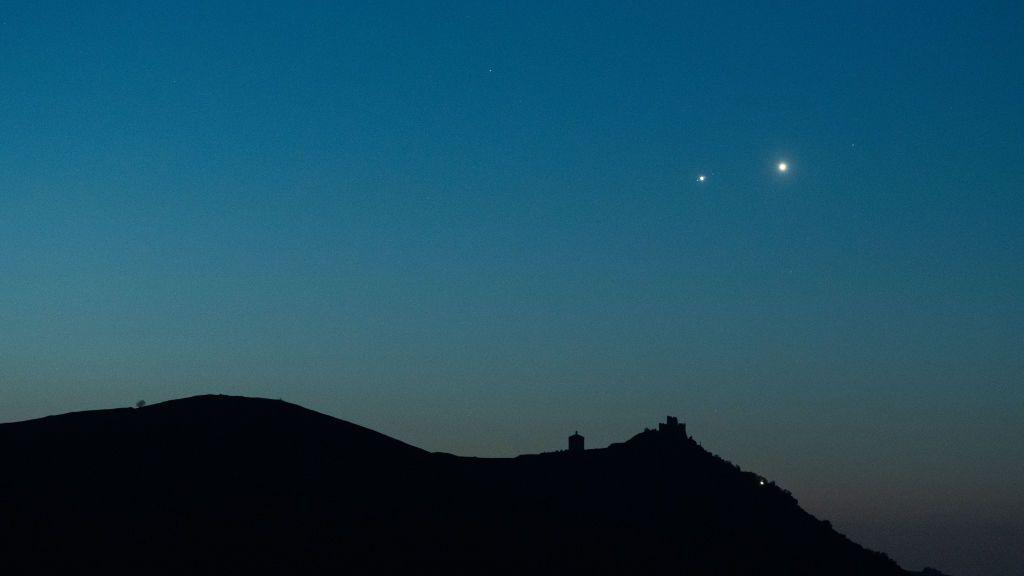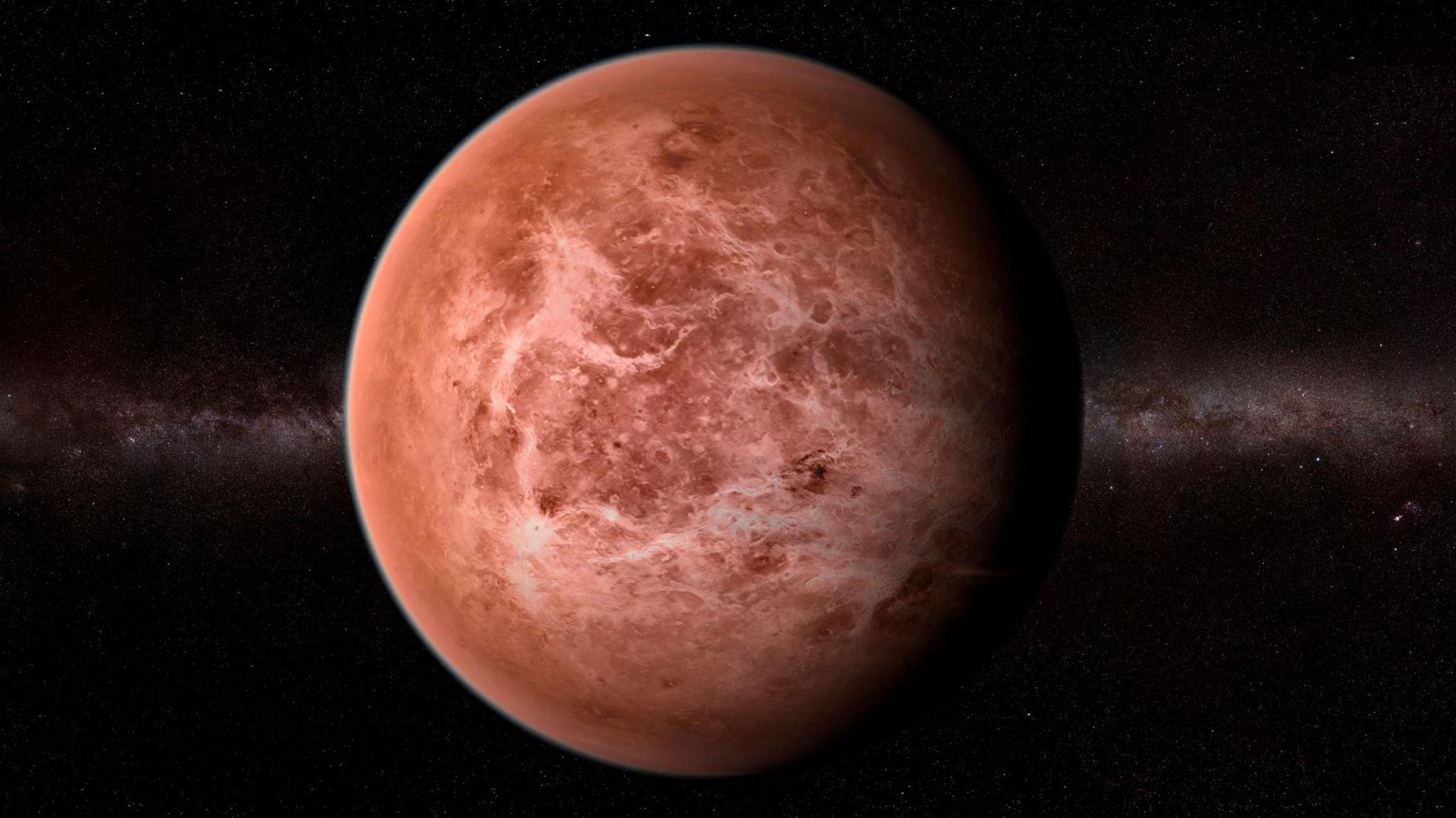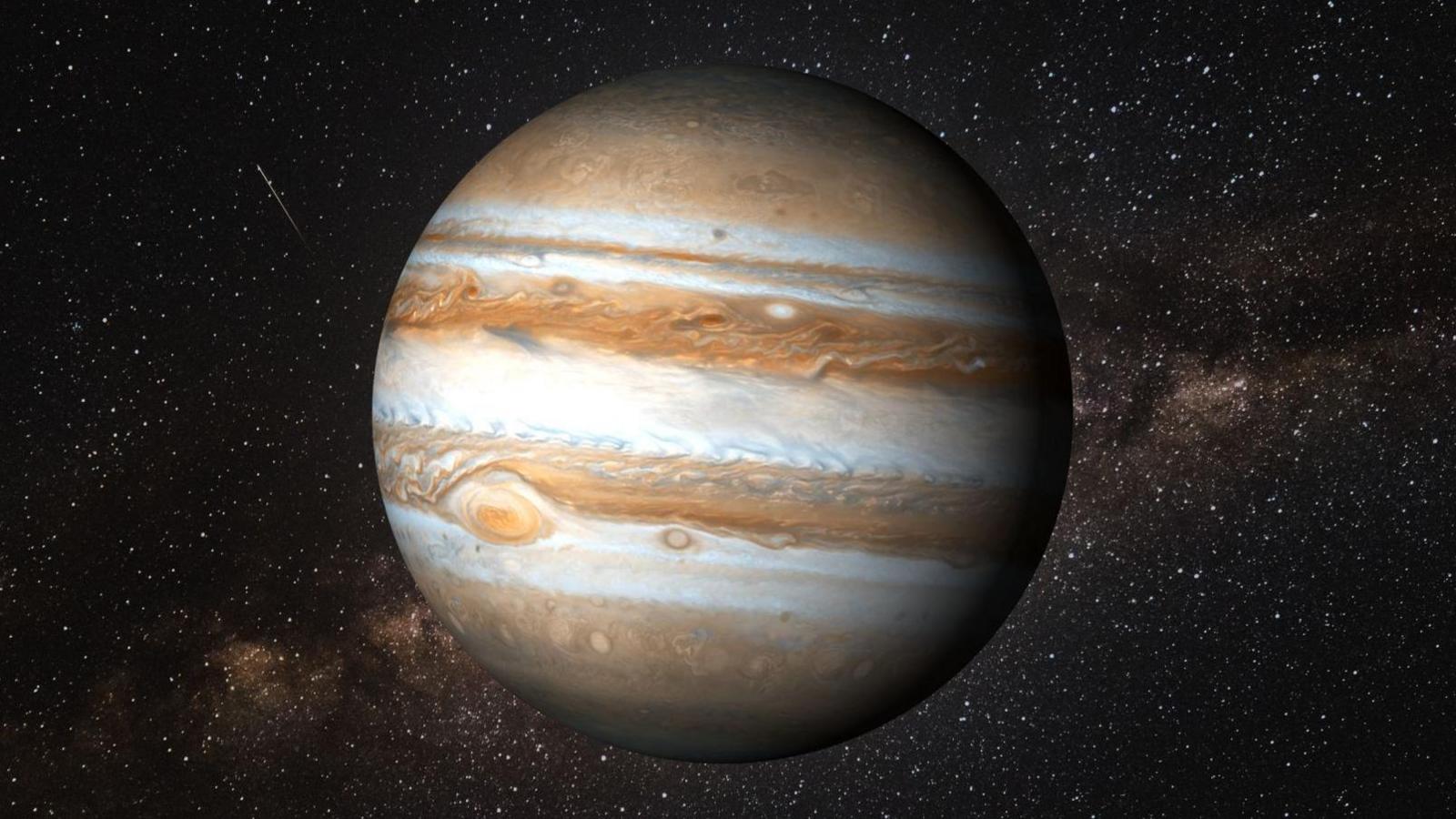Venus and Jupiter to 'meet up' in the sky

- Published
Calling all skygazing fans, there's a real treat in store later this month.
Despite being millions of miles apart, Venus and Jupiter will look as if they're close to bumping into each other in the night sky this month.
The planetary meet up is known as the conjunction and it takes place over several days.
In 2025, the planets will appear closest over the 11 and 12 August.
More space news
- Published5 August
- Published6 August
- Published17 July
When can I see the Venus and Jupiter Conjunction?

A conjunction is when two planets appear close together or even touching in the night sky as seen from Earth.
The Venus and Jupiter conjunction is a rare opportunity to see two of the brightest planets in the Milky Way, side by side.
According to the Royal Observatory Greenwich, Venus will outshine Jupiter with its white glow, while Jupiter will appear more golden.
The best time to see this happen is in the early morning sky on Tuesday 12 August.
In order to best see this, if you can, find a high spot and look for two dazzlingly bright spots very close together.
You don't need a telescope and you should be able to see it with the naked eye or binoculars.
After the event, the two planets will go their separate ways as they begin to drift apart again in the night sky.
What makes it more special, is that the conjunction is not the only space event to look forward to in the night sky on Tuesday.
Later that day, at around 9pm, the Perseid meteor shower is due to peak.
According to Nasa, during this time, it could be possible to see up to 100 meteors an hour.
Five top facts about Venus

1. Venus is the hottest planet in our solar system and the brightest object after the Sun and our Moon, which means on a clear night you might be able to see it without using a telescope.
2. Because of this, people have known about its existence for centuries and Venus was the first planet to be reached from Earth by a spacecraft.
3. Venus is named for the ancient Roman goddess of love and beauty. Most features on Venus are named for women. It's the only planet named after a female god.
4. Venus is the slowest spinning planet in our solar system, meaning one day on Venus is the same as 243 days on Earth.
5. But for Venus to orbit the Sun takes around 225 Earth days, which means that a year on Venus is shorter than its day!
Five top facts about Jupiter

1. Jupiter is the oldest and largest planet in the Milky Way - it's so big you could fit around 1,000 Earths inside it!
2. It's also the fastest rotating planet too, with one day only lasting 9.9 hours - meaning it has the shortest day of any planet in the solar system.
3. Jupiter doesn't have a solid surface and is mostly made up of swirling gases and liquids, giving it the name 'gas giant'.
4. It has winds that have been known to travel up to 400mph that swirl around the planet giving it bands and stripes.
5. Its most famous feature is its 'Red Spot', which is a storm that's so big it is visible from Earth with a telescope. It's thought to have been raging for 300 years!
